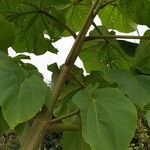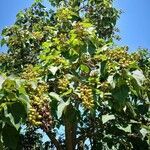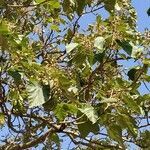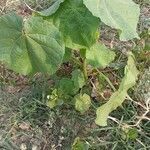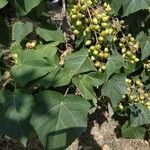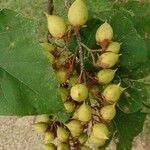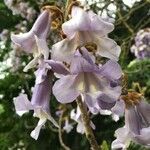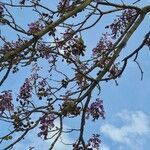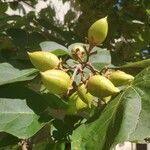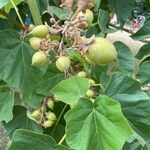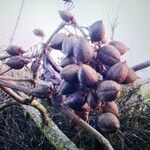A small deciduous tree. It grows 7-15 m high. The bark is grey and broken by orange blisters. The leaves are opposite and are felted underneath. They are oval and grow 36 cm long by 25 cm wide. They are heart shaped at the base and taper to a point. Sometimes they have lobes. The leaf stalk is hairy. The flowers are purple and like foxglove flowers. They occur on the tree before the leaves appear. They flowers are 5 cm long. They occur in upright panicles 40 cm long. The fruit is green to brown and oval and woody. It is 5 cm long. They contain winged seeds. There can be 2,000 seeds in a capsule.
